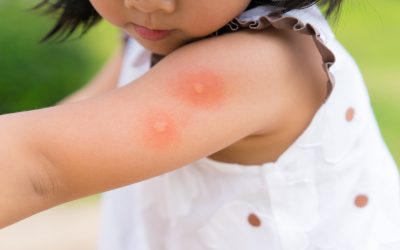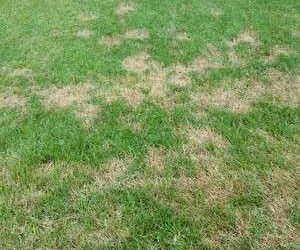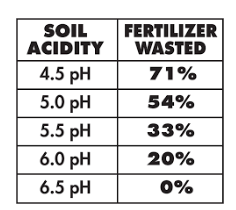Everyone loves a thick, lush green lawn. Just ask Fido! As the end of summer nears and fall weather is 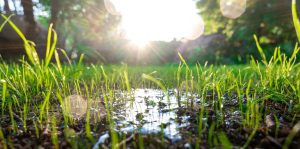 around the corner, the time for overseeding is upon us. But will overseeding alone address the needs of your lawn or do you have some “trouble areas” that need more attention?
around the corner, the time for overseeding is upon us. But will overseeding alone address the needs of your lawn or do you have some “trouble areas” that need more attention?
What’s the difference between Overseeding and Bare Area Repair?
The quick answer:
- Overseeding is applying grass seed to an established lawn.
- Bare Area Repair is renovating areas that overseeding will not effectively give desired results.
The deeper answer:
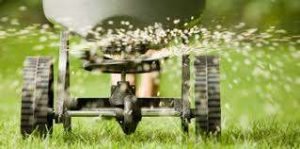 Overseeding
Overseeding
Late summer into fall is the perfect time for overseeding your lawn. A major reason to overseed is to incorporate new grass cultivars that are more drought and disease tolerant. Overseeding also thickens up a thin to sparse lawn. Increasing your lawn’s density is also a natural, organic way to reduce weeds in your lawn. The thicker and healthier your lawn is, the 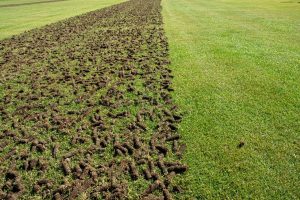 harder it is for weeds to take root and thrive. They simply don’t have the real estate to establish themselves.
harder it is for weeds to take root and thrive. They simply don’t have the real estate to establish themselves.
Even healthy, lush lawns benefit from overseeding when accompanied by aeration. The aeration process opens up the soil, reduces thatch, and allows existing and new grass to develop stronger, deeper roots. As with any living organism, grass has a life cycle and eventually dies off as it gets older and worn. Having newer growth mixed in with established growth helps keep your lawn thick and healthy over time.
Bare Area Repair
IF, on the other hand, your lawn has ugly bare spots or patches, overseeding is not the immediate answer. You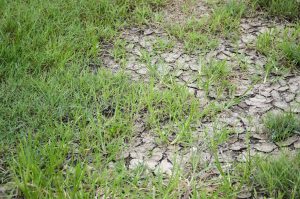 have to investigate the cause of your bare area to correct the situation. Bare areas are caused by things such as excess traffic, pet damage, standing water, weed eradication and excess shade.
have to investigate the cause of your bare area to correct the situation. Bare areas are caused by things such as excess traffic, pet damage, standing water, weed eradication and excess shade.
The hardest one of these causes to diagnose and remedy is standing water. When you look at your bare area, does it have cracked soil? This is an indication the area is unable to drain off properly when it rains or the lawn is irrigated. Changing the pitch/slope of the area to allow for proper drainage is necessary for grass to grow.
Another often overlooked cause of bare spots is broadleaf weed eradication. Getting rid of weeds is a multi-step process. Eradicating them is just the first step. The areas where there were once weeds need to be repaired for grass to grow. Leaving these areas bare or simply overseeding invites weeds to reclaim their place in your lawn.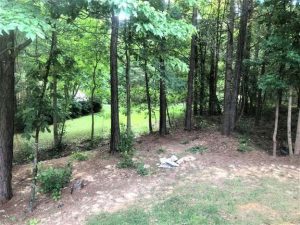
Perhaps, at least emotionally, the most challenging cause in excess shade, which requires the thinning of tree limbs and sometimes trees themselves to address the issue. The reality is, even shade tolerant turf grass species can’t grow under a canopy of shade. Some sustained sunlight is necessary for turf to thrive.
Bare area repair requires the soil to be disturbed beyond what typical aeration provides, applying a higher rate of seed than overseeding and applying organic top dressing to create a successful environment for filling the bare area with a strong, healthy stand of grass.
Need Help Deciding?
ProLawn can help you decide the best course of action for your lawn’s particular needs. We have the expertise in everything from the best methods for seeding your property’s unique lawn to choosing appropriate fertilizers 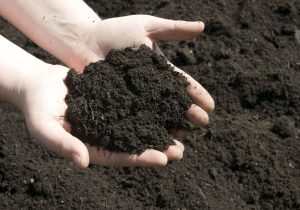 and varieties of seeds. Our organic approach to lawn health care minimizes environmental impact and increases germination success rates.
and varieties of seeds. Our organic approach to lawn health care minimizes environmental impact and increases germination success rates.
Want the Pros at ProLawn to help? Give us a call at 540-662-8316 or email us at clientservices@prolawn.com to determine the best course of action for your situation.

